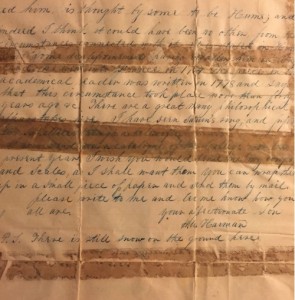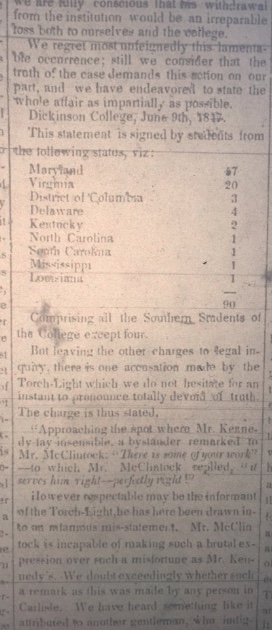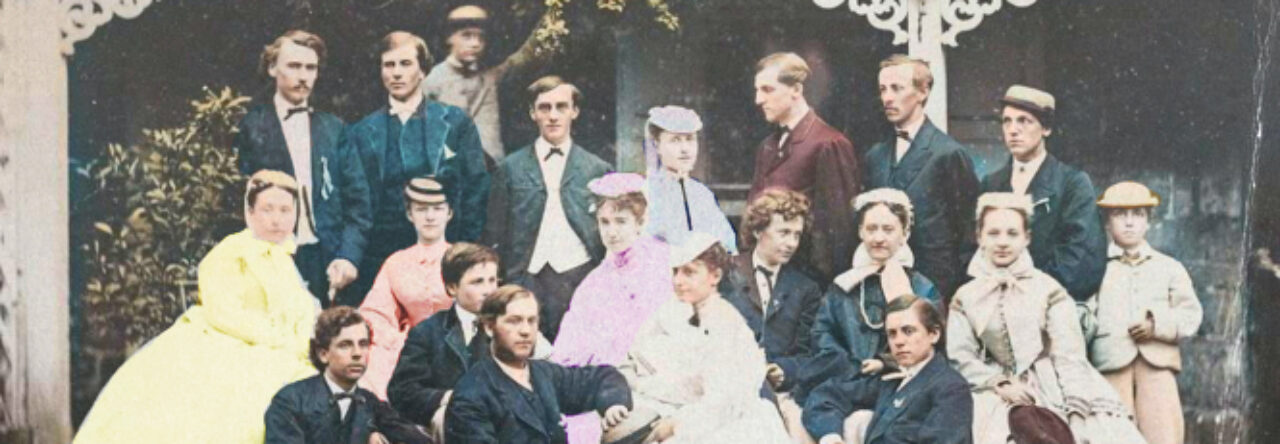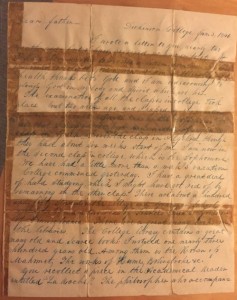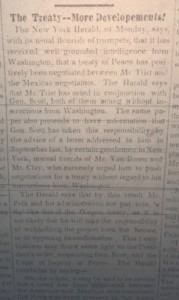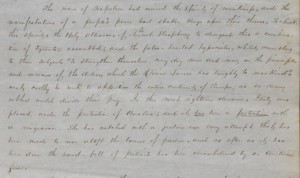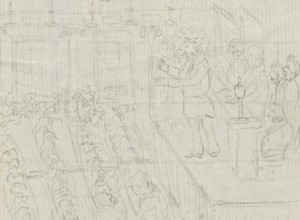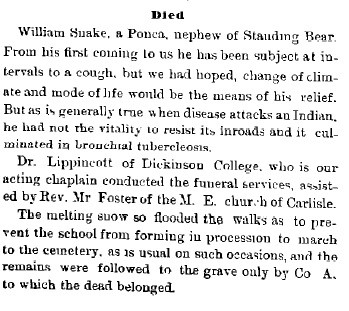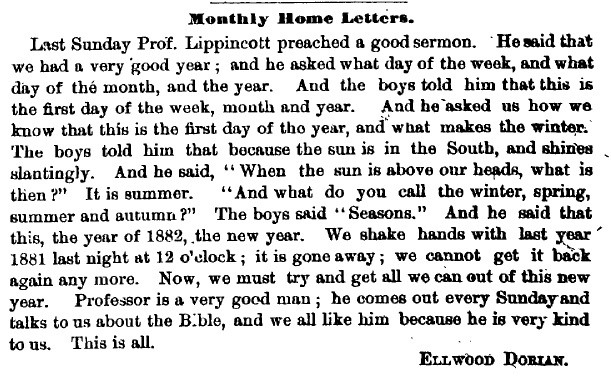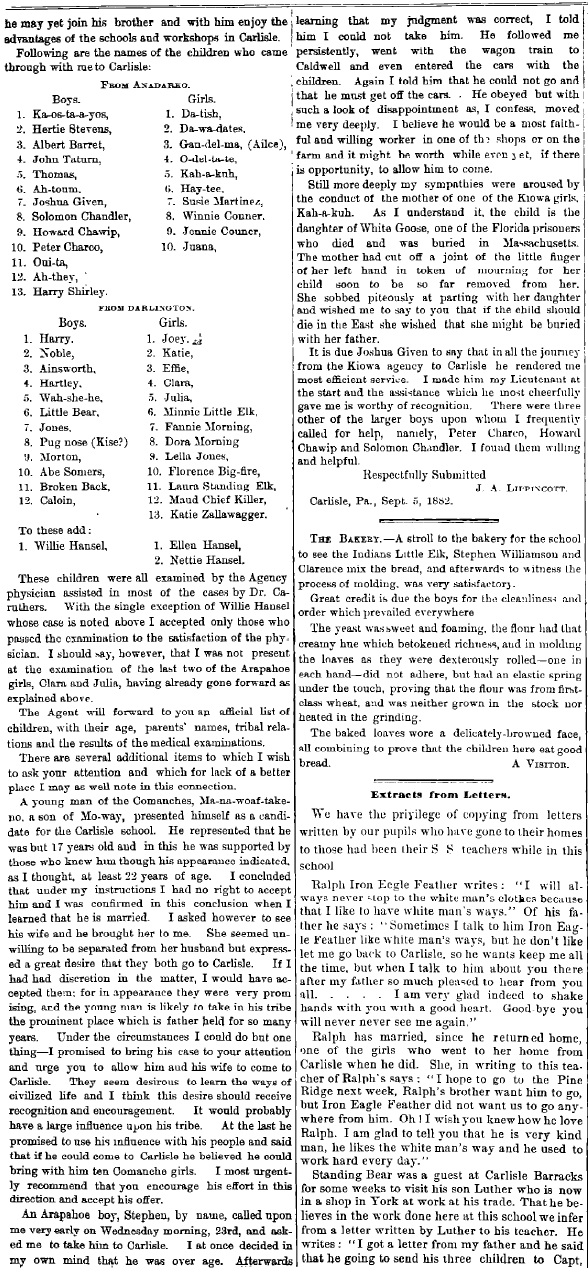Although I have already done newspaper research for a previous research journal, I made a series of silly mistakes that could have been rather easily avoided. Furthermore, it seems like newspaper articles could prove to be rather useful to learn more about the Dickinson College class of 1860 because they are primary documents and can explain how the public felt about the members of the class and what their accomplishments were. With this in mind, I decided to delve into newspaper databases once again to learn more.
As described in my previous newspaper-related research journal, I originally had to learn how to use newspaper databases before I could begin learning new information about the class of 1860. None were particularly challenging, but it did take a little time to get the hang of it. This time around, this roadblock was no longer an issue because I already had experience working with newspaper databases.
I went to PA Civil War Newspaper Collection first because I had success using this database beforehand and found it easy to use. On this database, I found an article about an escape from Libby Prison in February of 1864. Clarence G Jackson, a Union officer from the class of 1860, was a prisoner at Libby Prison and participated in this bold escape. The article details the arduous and long process that the prisoners undertook to dig their escape tunnel. It also describes the process in which they scattered after getting out of the prison to avoid detection, and it points out that sympathetic black people helped the escapees by giving them food and information.
The article was in The Alleghanian, a Republican newspaper from Ebensberg, Pennsylvania. As a Republican and Northern newspaper, they may have romanticized the escape somewhat by using words like “daring” and by portraying the escapees as heroic. The article goes as far as to say the escape was more like a “romance of the middle ages” than an actual event. The article likely would have been written in a much different tone had it been about Confederates escaping from a Northern prison.
I had previously found a book, Libby Prison Breakout: The Daring Escape from the Notorious Civil War Prison, about this exact event and the prison itself for my annotated bibliography, so it was great to find a newspaper article about it as well to learn more and help get more information on the brave escape from one of the South’s worst prisons. It will also be interesting to compare the short newspaper article to Joseph Wheelan’s book to put each source into context.
More than just online databases, I looked for different avenues to find 19th century newspapers. I went to both the Dickinson Archives and Special Collections, and the Cumberland Country Historical Society to find articles about the class’ commencement, which was held on July 12th, 1860.
At Dickinson Archives and Special Collections, I worked with Malinda Triller-Doran, the Special Collections Librarian, to find a truly remarkable article from the New-York Daily Tribune, published July 24th, 1860. The article starts at the bottom of one column and rolls over to the top of the other one, so it requires two pictures: part one and part two. The article, “Pro-Slaveryism at Dickinson College,” is about a Dickinson alumni, George A Coffey’s, speech given at commencement that year. Coffey’s speech started off by saying that freedom is a right and that “without it civilization must die.” However, the speech took a turn when he says that Americans do not fulfill their principles of liberty and equality because of the four million slaves in the United States at that time. This stance made people in the crowd, including multiple clergymen, very unhappy. They hissed at Coffey while he was giving his speech, and eventually, several Methodist Ministers, a Presbyterian pastor, and some of their followers simply walked out because they were so angry.
While I found this to be interesting, the college’s response disappointed me as a Dickinson student. The article reported that no one from the college congratulated Coffey on his speech, and that the Board of Trustees held a meeting in response to it. The meeting was private, but it was thought that the Trustees decided that they needed to be more careful about selecting their speakers and that they would never again invite an “anti-slaveryite” to speak at commencement. Furthermore, the article states most of the faculty and trustees have always been either pro-slavery or “conservative” on the matter. It does make some sense that the college would not have strong anti-slavery views as it is near the border of Maryland and had many students from Maryland and Virginia, but the article was still very surprising to me, and it is key to understanding Dickinson’s stance on slavery mere months before the Civil War began.
With that being said, it is worth noting that the New-York Daily Tribune was affiliated with the Whig and later Republican parties. Its founder and editor, Horace Greeley, was so politically inclined that he actually ran for president in 1872. Before the Civil War, Greeley was very against slavery, so it is possible that Greeley and The Tribune exaggerated or spun the story to make Dickinson College look bad for reacting negatively to Coffey’s speech in order to further their own cause.
After seeing this illuminating article, I went to the Cumberland County Historical Society to look at microfilm from local Carlisle newspapers to see how they reported on commencement. Specifically, I was interested to see what, if anything, they said about Coffey’s speech and the college’s reaction to it. When I arrived, Robert Schwartz, their Archives & Library Research Specialist, pulled microfilm from The Carlisle Herald and showed me how to use a microfilm reader. Though I had always heard bad things about microfilm and that it was painfully slow to use, I found what I was looking for in a few minutes and found it to be pretty easy. However, I think this is likely because I knew the date of the graduation already.
Originally, I found a lengthy article about commencement written just one day after the event that spanned four columns. This article briefly summarized a series of speeches given, the anniversary events of the Belles Lettres Society and the Union Philosophical Society, and gave a list of the graduates, as well as those receiving honorary degrees. Interestingly, it is repeatedly mentioned that there were many “ladies” at the multiple events surrounding commencement, which surprised me because women were not allowed to attend Dickinson at this time. I would have to assume that these “ladies” were either family from the students’ hometowns or from Carlisle and looking for a potential husband.
Also, George Baylor’s speech at the Union Philosophical Society anniversary event stuck out to me. Baylor was a graduating student and would later become a highly successful cavalry officer for the Confederate Army, but the speech he gave was on the importance of poetry and its role in “dispersing the ignorance.” It just a little odd to me because poetry is not something one would typically associate with a soldier. It helped to humanize him, and other Civil War soldiers, because it made me realize that all the soldiers in the war were real people with real lives and interests outside of the military.
Most importantly, the article mentioned Coffey’s speech and the Board of Trustees. The Herald’s reaction was much different than that of the New-York Daily Tribune. Rather than praising Coffey and condemning those that walked out during the speech, The Herald suggests that divisive topics like slavery should not be talked about at public places like a commencement where people that disagree are likely to become offended and angry. These people “have a right to expect” that they can attend a commencement “without the discussion of bitter vested questions.”
The article also mentioned that at a meeting of the Board of Trustees, Dr. Collins’ resignation was discussed, and that the paper hoped to receive a copy of what was said next week. Reading this, I decided to see if they had an article about it in the issue next Friday. Sure enough, there was an article about Dr. Collins, who was President, resigning to live in the South and work for another college. The article has a copy of student resolutions, including that Collins was a “Christian gentleman,” a great president, and that he was a true friend. It seemed as though the student body deeply respected Collins and were sad to see him go.
There was no indication that at the Trustees’ meeting they discussed Coffey’s speech or that they did not want another anti-slavery speaker at a future commencement. Though The Carlisle Herald did say that they thought the speech was inappropriate, they did not include that anyone walked out or that the Trustees did not approve. While both accounts made it seem that the overall reaction to Coffey’s speech was negative, it was interesting to see the difference between how mild the Carlisle newspaper was and how extreme the The New-York Daily Tribune was.
Finally, The Carlisle Herald had another article about commencement in the same issue with the article about Collins’ resignation. The article praised “Old Dickinson” throughout and thought that the graduation was one of the best in the college’s history. It goes as far as to say that the college had never been better, and that those that tried to defame it were simply wrong. Though The Tribune’s article was not about the commencement as a whole or the state of the college, it was interesting to see The Herald praise the college after reading The Tribune write negatively about the faculty and Board of Trustees.
It was great to find more newspaper articles about the class of 1860, and I am very glad that I did it. I was shocked to find the New-York Daily Tribune’s article, but after finding The Carlisle Herald’s article, I am not sure how true their claims are. Or maybe they are true but, The Herald simply wanted to make the commencement look better than it was. I would assume that the true story of the reaction to Coffey’s speech was somewhere in the middle of the two article’s stories. I am also happy to have used microfilm for the first time and that it was much easier than I expected.
Newspaper Article Citations
“Commencement Exercises at Dickinson College.” The Carlisle Herald, July 13, 1860. 1:2-5. [Cumberland Country Historical Society]
“Daring Escape of Union Soldiers from Libby Prison.” The Alleghanian, February 25, 1864. 2:2. [PA Civil War Newspapers Collection]
“Pro-Slaveryism at Dickinson College.” New-York Daily-Tribune, July 24, 1860. 7:4/5. [Dickinson Archives and Special Collections]
“Resignation of Dr. Collins.” The Carlisle Herald, July 20, 1860. 2:5/6. [Cumberland Country Historical Society]
Untitled. The Carlisle Herald, July 20, 1860. 2:5. [Cumberland Country Historical Society]
